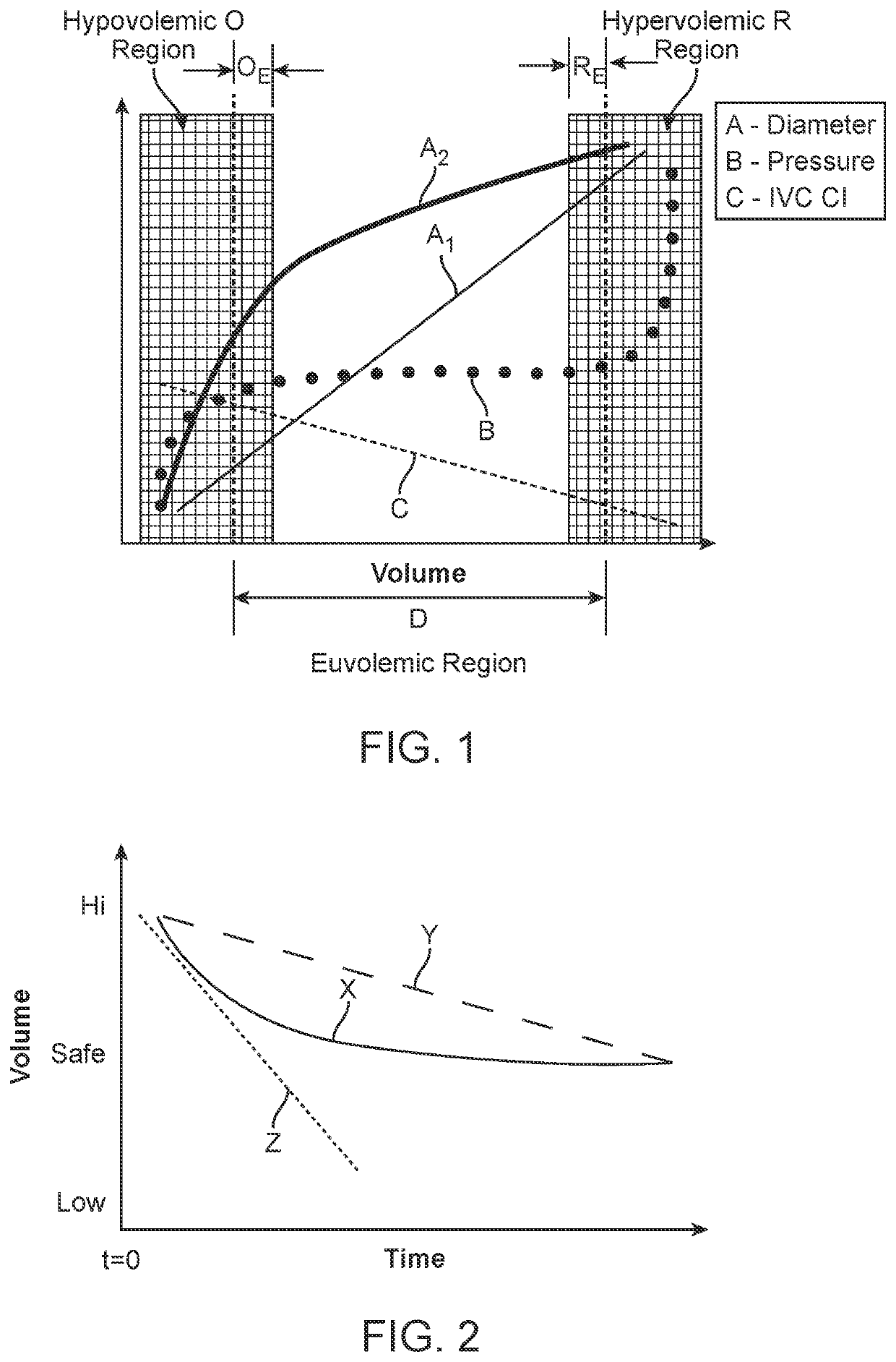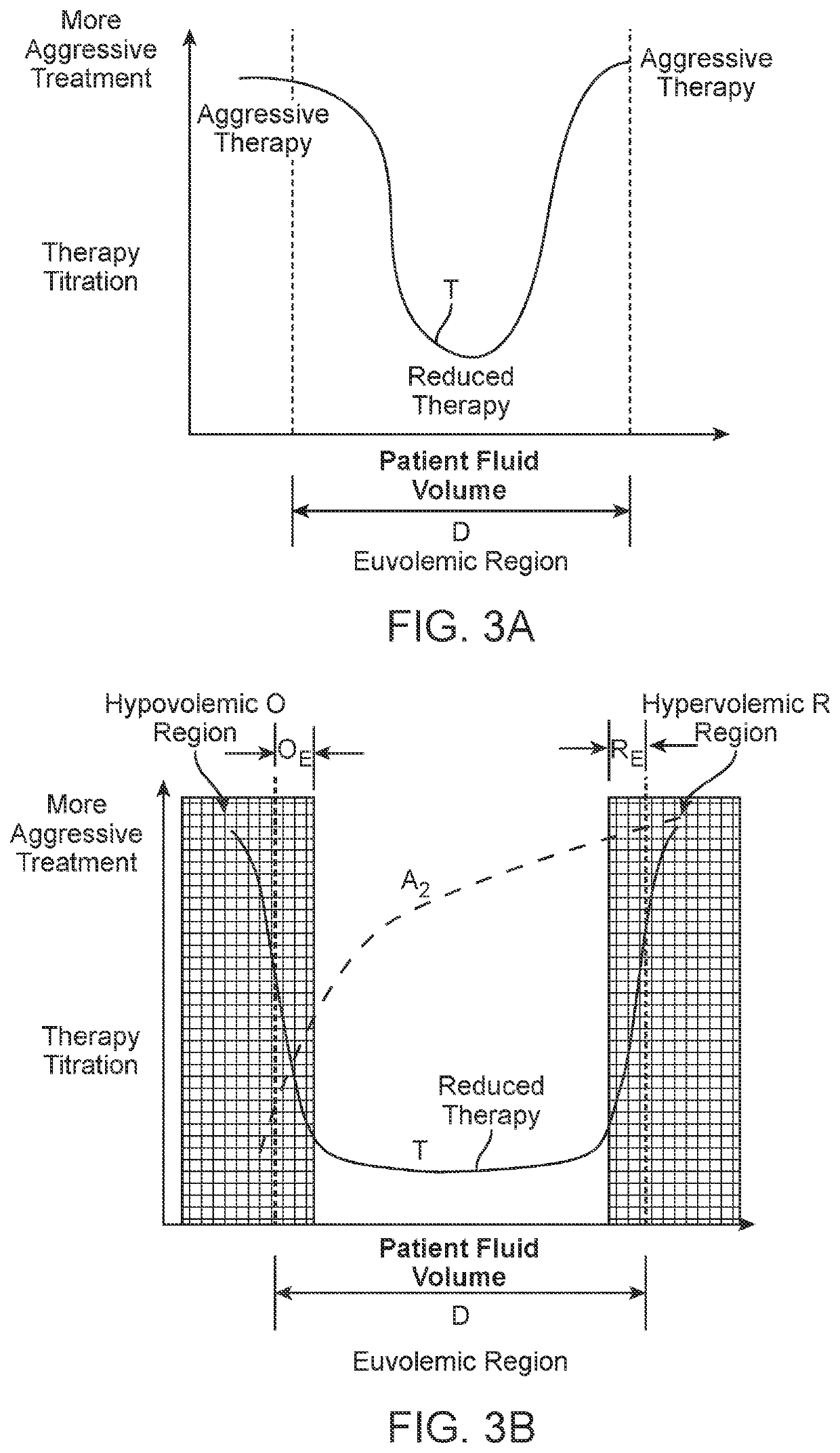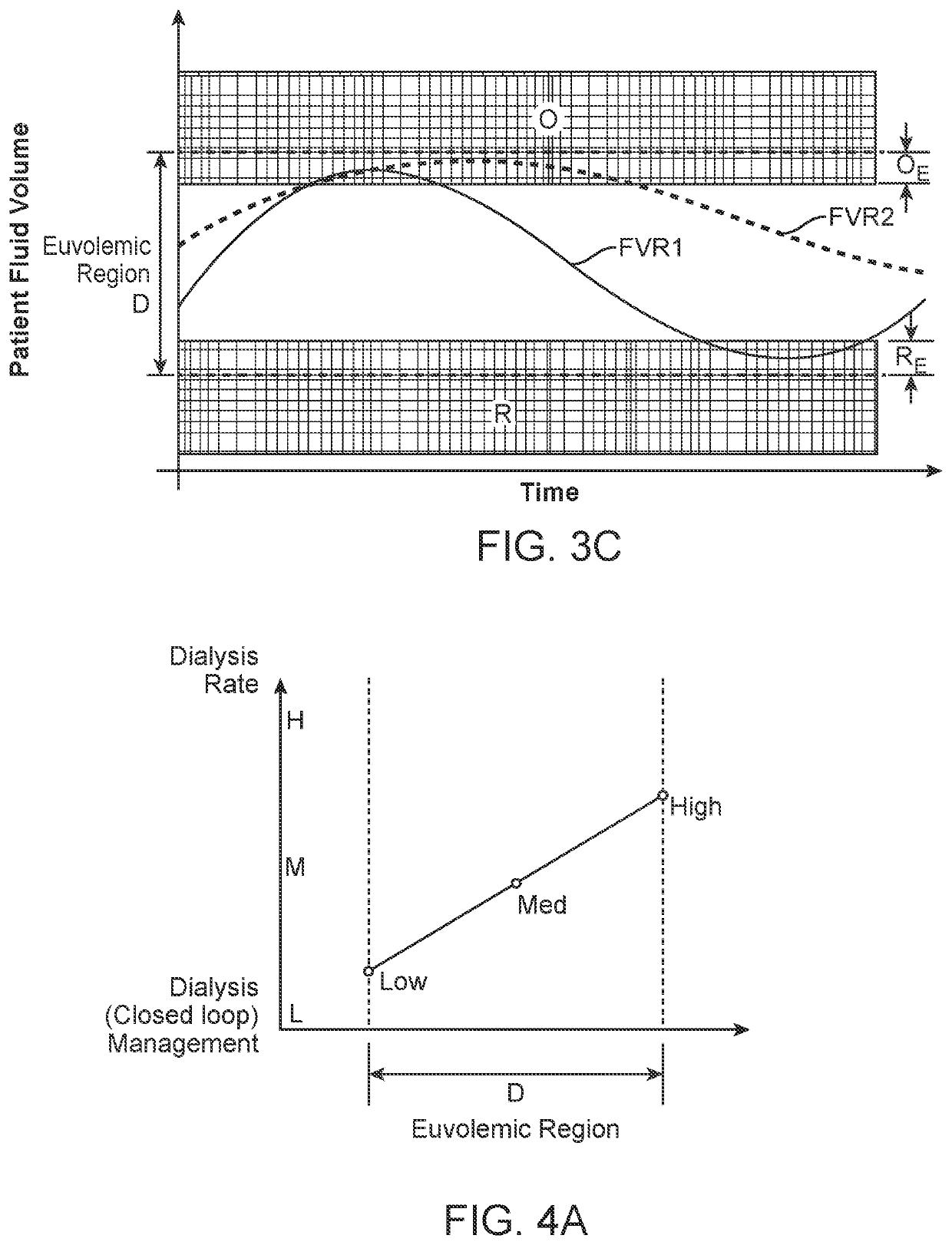Systems and Methods for Self-Directed Patient Fluid Management
a patient fluid management and self-directed technology, applied in the field of self-directed patient fluid management, can solve the problems of observing the response of therapy often significantly delayed, the patient is in a hypovolemic state without sufficient fluid volume, and the management of patient fluid volum
- Summary
- Abstract
- Description
- Claims
- Application Information
AI Technical Summary
Benefits of technology
Problems solved by technology
Method used
Image
Examples
Embodiment Construction
[0025]Embodiments disclosed herein include systems and methodologies allowing for regular, periodic or continuous monitoring of fluid volume more accurately than current techniques and with reduced lag time before changes in volume status are observed, thus providing earlier warning of hypervolemia or hypovolemia and enabling the modulation of patient treatments to permit more stable long term fluid management. Further, in acute situations, the methods and systems disclosed enable more rapid reduction of excessive intravascular volume and edema and restoration of more ideal fluid balance, with lessened risk of creating a hypovolemic state as can be created when patient “drying” treatments overshoot due to the response of patient monitoring devices or protocols.
[0026]A challenge presented by patients in decompensated heart failure is managing patient fluid balance, bringing down excess fluid volume as quickly as possible, but without overshooting and taking the patient into a potenti...
PUM
 Login to View More
Login to View More Abstract
Description
Claims
Application Information
 Login to View More
Login to View More - R&D
- Intellectual Property
- Life Sciences
- Materials
- Tech Scout
- Unparalleled Data Quality
- Higher Quality Content
- 60% Fewer Hallucinations
Browse by: Latest US Patents, China's latest patents, Technical Efficacy Thesaurus, Application Domain, Technology Topic, Popular Technical Reports.
© 2025 PatSnap. All rights reserved.Legal|Privacy policy|Modern Slavery Act Transparency Statement|Sitemap|About US| Contact US: help@patsnap.com



